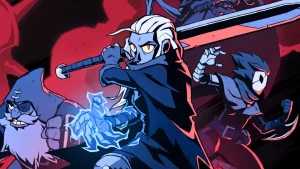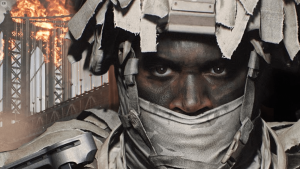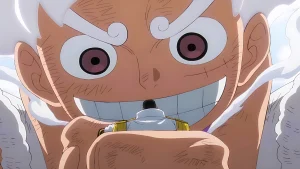Capcom is a well-known developer in the gaming industry, but there was a time when they were known for more than Street Fighter, Resident Evil, and Monster Hunter. In its earlier years, Capcom delved into numerous genres, even releasing one of the most groundbreaking horror games of its era. But what I’m interested in isn’t Capcom’s horror pedigree, but a completely different genre instead. Not many will remember Capcom’s experiments and franchises outside its core games, but those that do, myself included, place them in a special place in their heart.
Breath of Fire is one such series. It was a crown jewel among Capcom’s portfolio as it could compete with the likes of Final Fantasy and Dragon Quest. It was more than just another RPG. Capcom blended emotional storytelling, vivid character design, and a unique dragon-centered mythology to create a memorable series, one that has been neglected for more than a decade.
Capcom’s Breath of Fire first began in 1993 on the Super Nintendo, quietly arriving in an era of already genre-defining titles. It may not have had the flash of its peers, but it more than made up for this with its heart. It showed me a world of mysticism and reincarnation, of gods and dragons, and placed at the center of it a hero named Ryu (not Street Fighter’s Ryu). Throughout the series, players would continue to play as reincarnations of Ryu and go on various quests, something that reminded me immensely of The Legend of Zelda.
Capcom continued to refine the series over time with each new entry. In a way, it matured alongside its fans, offering more emotional storytelling, richer character arcs, and beautiful, painterly, hand-drawn aesthetics. The PlayStation era in particular was where the series gained its most distinct identity, one rooted in folklore and introspection. Breath of the Fire felt alive, melancholic, and mystical all at the same time.
It wasn’t just the gameplay and visuals that made Breath of Fire stand out. It was also the quiet tone that was more reflective and complex in its themes. Beneath the dragons and demons were questions about destiny, identity, and the cost of power. Breath of Fire’s narrative stayed with me long after the credits rolled and was instrumental in building my love for RPGs.
The 1990s and early 2000s are home to some of the best RPGs in history, many of which were genre-defining, like Final Fantasy VII. This is where Breath of Fire was first released, during the golden age of JRPGs when the genre was fully embracing cinematic storytelling. The game was considered massively successful in Japan and only moderately less successful in the United States. Its competitors had already carved out a loyal fan base, making it harder for Breath of Fire to get momentum.
But Capcom managed to secure a portion of the JRPG audience because it didn’t try to imitate the titans of the genre. It opted for a smaller, more intimate approach rather than competing in tech or budget. Small towns, flawed heroes, and emotionally grounded stories were the heart of Breath of Fire. The main narrative wasn’t necessarily to save the world, but rather to rescue a sister or clear a falsely accused friend’s name, which just happened to coincide with world-altering events.
By the time Breath of Fire IV was released in 2000, Capcom had managed to build the series into one that could rival the likes of Square Enix’s most popular series. Fans often put it in the same category as Final Fantasy or Dragon Quest. Its morally ambiguous stories, painterly art style, and haunting music solidified it as more than a JRPG clone of games that had come before.
After the release of Breath of Fire: Dragon Quarter in 2002, Capcom seemingly abandoned the series. This PlayStation 2 title was significantly different from the rest of the series, and Capcom’s experiment split the fan base. Some enjoyed the new perspective and gameplay, but veterans found it so different that it no longer felt like the series they loved. Then came Breath of Fire 6 over a decade later, and it was clear Capcom didn’t know what to do with the series.
Breath of Fire 6 was a mobile-only title that stripped away everything that made the series what it was. While the previous game was a bold experiment that didn’t pan out, this game was an assassination. Gone were the deep character arcs, turn-based battles, and sense of worldbuilding. Instead, Capcom simplified the systems and introduced the dreaded energy timers and microtransactions of mobile games. The backlash was immediate, so much so that Breath of Fire shut down after two months.
Capcom’s mishandling of Breath of Fire after the PS2 days is a tragedy. Rather than building upon its strengths, it tried to repackage it for the wrong audiences. I could understand if the series was left dormant while it focused on heavy hitters like Street Fighter, Monster Hunter, and Resident Evil, but to destroy the series’ identity the way it did was wrong.
Despite this poor treatment, I believe Capcom could do right by Breath of Fire. All it would take is a remaster of the first game, or even a rerelease of the first three games with some quality-of-life features. We’ve already seen Square Enix heavily invest in remaking its older games, so there is no reason Capcom can’t follow. Giving the series a return would not only play into nostalgia for fans but also show Capcom values its history.
What do you think? Leave a comment below and join the conversation now in the ComicBook Forum!
The post Capcom’s Classic JRPG Series Needs a Proper Return After a Decade appeared first on ComicBook.com.




